Nutritious Green Foods You Didn’t Know About
Good nutrition is all about variety! Browse through our list of unusual fruits and veggies and give yourself a chance to try something new.


I am a member of LA Fitness in Marietta, Georgia and I saw an advertisement about you accepting email questions. I was wondering what you think about 16-8 fasting diet. My doctor told me about it. I’ve read a lot about it but it appears it’s just for obese people which I’m not. I need to lose about 10 to 15 pounds. Any advice would be much appreciated.
– Donna G.

From what I know of this variation of increasingly popular intermittent fasting, the 16-8 approach is strictly time based, with eating condensed into 8 hours after a 16 hour fast. Periodic fasting (time restricted feeding) allows one to forgo traditional calorie-counting in an attempt to reduce overall caloric intake. Successful long-term weight loss methods also incorporate routine food intake recording, weight monitoring and 150 minutes per week of moderate intensity exercise.
Current articles show the following about intermittent fasting… In a small New Zealand study1 of 37 subjects with type 2 diabetes and obesity, 5:2 fasting over 12 weeks improved weight, HgA1C, fasting glucose, and reduced need for medication, though there were more hypoglycemic events. An even smaller pilot study2 on obese individuals following 16-8 fasting over 12 weeks resulted in lower systolic blood pressure, reduced daily intake by approximately 340 calories, and nearly 3% loss of body weight compared to controls. A Registered Dietitian’s review3 concluded that “There’s clear disagreement even among researchers on the benefits of fasting and which type of fasting would be best for which individuals,” yet “Fasting may be a viable weight loss option for obese individuals who can’t stick to a daily calorie restriction.”
The effect on normal-weight individuals is not known. See our previous answer to “Will intermittent fasting help me lose weight?” by clicking here.
References:
– Debbie J., MS, RD
This article should not replace any exercise program or restrictions, any dietary supplements or restrictions, or any other medical recommendations from your primary care physician. Before starting any exercise program or diet, make sure it is approved by your doctor.
Some questions have been edited for length and/or clarity.
 Have a nutrition question? Our registered dietitian is ready to help!
Have a nutrition question? Our registered dietitian is ready to help!
Email nutrition@lafitness.com or submit your question below and it may be featured in an upcoming article!
Good nutrition is all about variety! Browse through our list of unusual fruits and veggies and give yourself a chance to try something new.
Does liberally salting your food help you pump more iron in the gym? Registered Dietitian, Debbie James, investigates the claims!
One frequently asked question is about the recommended intake of protein. We hear you! Here is everything you need to know.
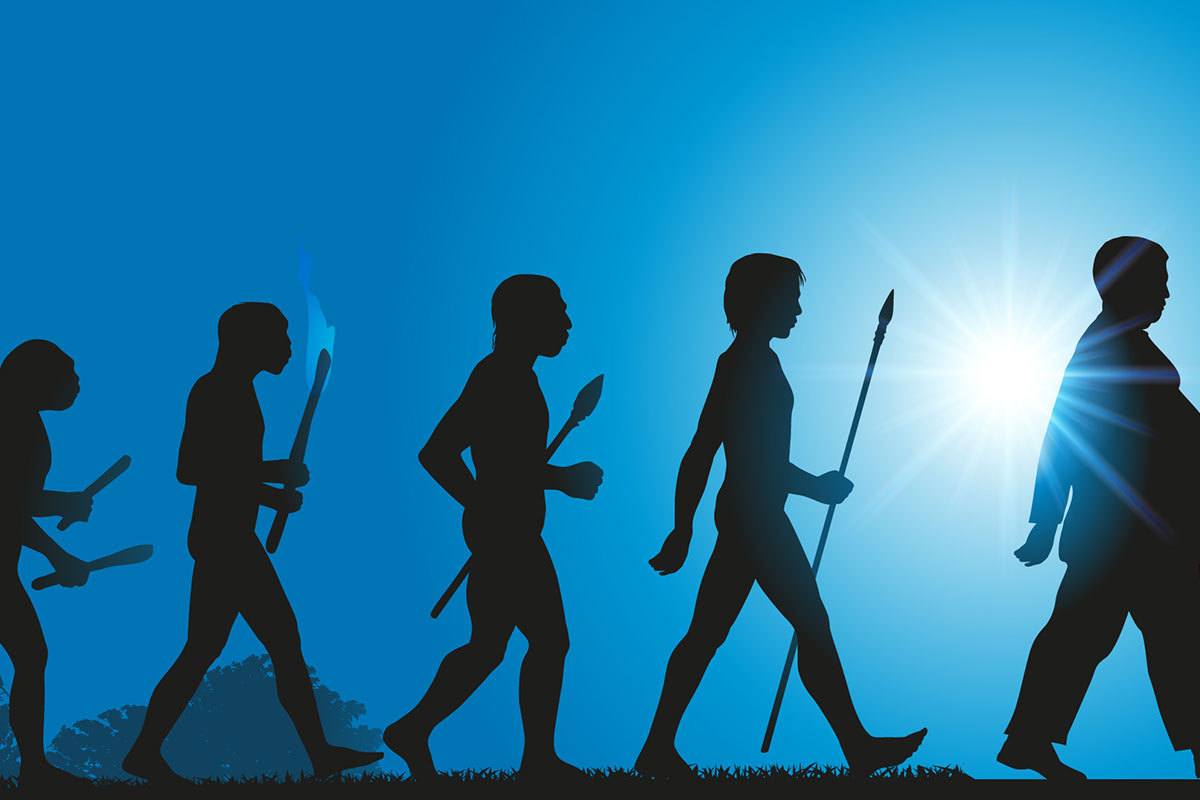
“In history, a great volume is unrolled for our instruction, drawing the materials of future wisdom from the past errors and infirmities of mankind.” – Edmund Burke
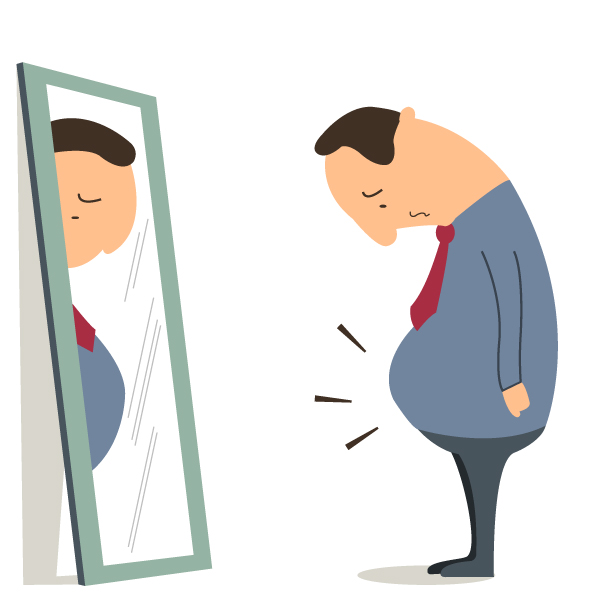
As a whole, humans have experienced chronic food shortage and malnutrition since the dawn of time.1 Delve back to the Paleolithic period and there’s no skeletal evidence of overweight humans. Hunter-gatherers were most likely thin, like the current last remaining hunter-gatherers – the few indigenous peoples across the globe still living as their tribal ancestors have. Take the Kalahari Bushmen in Africa, for example, these persistence hunters may chase prey 2-5 hours until the target animal is exhausted enough for the hunter to spear it by hand! Needless to say, they were likely not overweight.
Enter the Neolithic era approximately 10,000 years ago in the aftermath of the last the ice age; its advent of agriculture and animal domestication systems are but two examples of human adaptations over thousands of years to which we can attribute our survival. The convenience of centralizing food procurement in such a way was a logical answer to the growth of human population whilst wild game dwindled and foraging grew impractical.2 The concentrated production of crops and edible animals saved us from the very real threat of starvation that existed. Historically, farming and agriculture were physically demanding ventures with energy costs comparable to, and in some cases exceeding, that of foraging.2 Thus, normal weight or underweight was the norm and obesity was rare.
Rachel Laudan, a noted food historian and author at the University of Texas at Austin, gave us her insight that “there’s evidence that there always was a propensity toward obesity among the wealthy in any society.” Some wealthy, high-status individuals in ancient Greece, Byzantine, Greco-Roman regions and elsewhere were obese for their time.2 Laudan explained that “overweight was viewed as a status symbol.” For most of history, humans faced a scarcity of food which led to the belief that being fat was good and in fact, desirable.1
Humans have long adapted to the natural environments in which they lived. Thus, agriculture was not the same everywhere and diets varied widely depending on geography.3 But in general, farming did allow the consumption of larger amounts of grain, milk, and domesticated meat.3 This shift in dietary patterns over thousands of years across the globe resulted in at least one evolutionary change — our ability to digest milk past weaning,3 attributable to milk consumption by our adult agricultural ancestors.
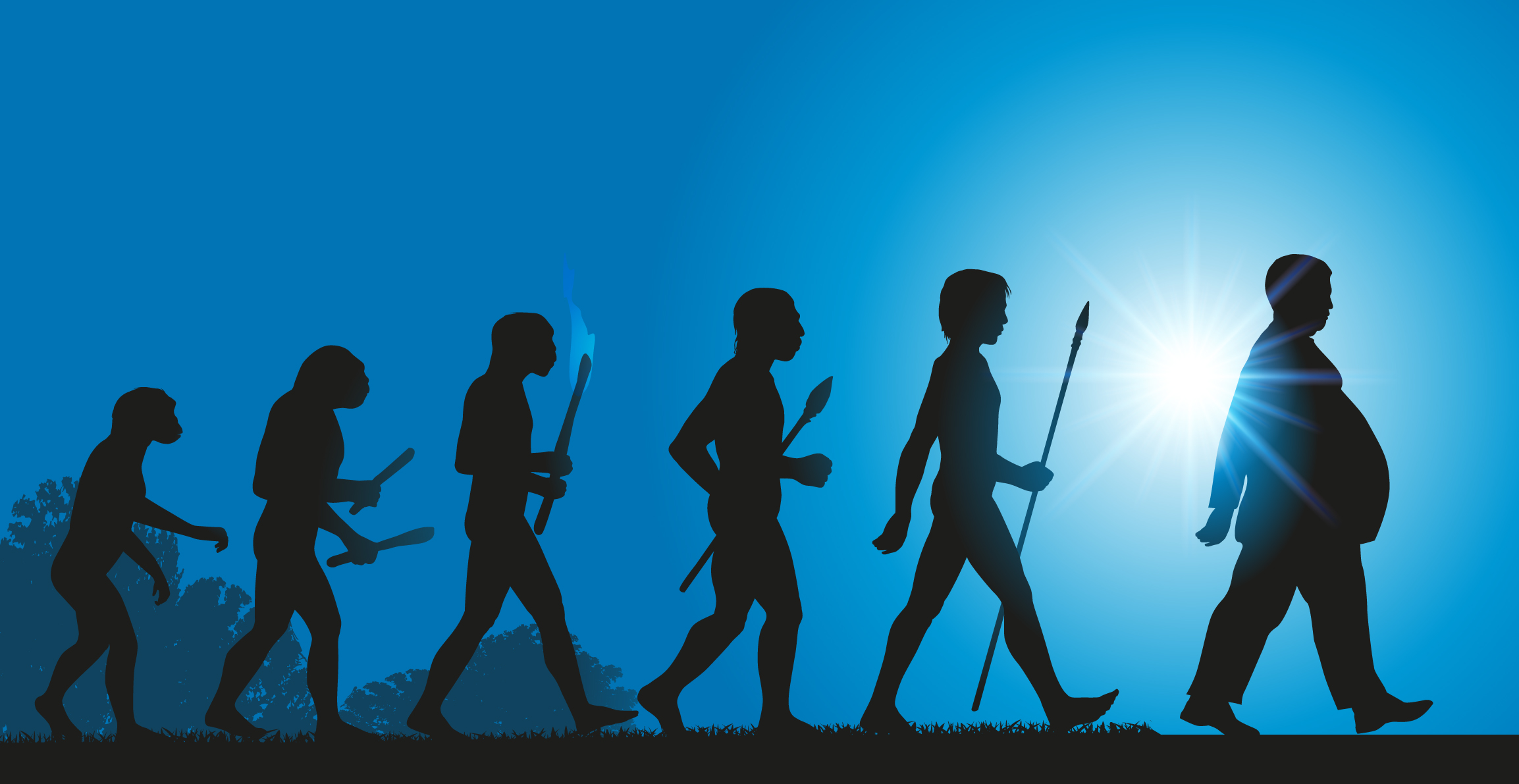
Welcome to the Industrial Age which began just over 200 years ago. With machinery, harnessed power, and train transportation of goods in the late 19th-century, the streamlined industrialization of food started to make basic subsistence relatively effortless for more and more people.2 As food systems delivered so much food to so many people at such a low cost3, populations largely went from subsistence to abundance in terms of food availability.
Food security around the time of World War I was such a primary concern that it drew then-US President Woodrow Wilson to direct the Secretary of Agriculture to expand production of the staple food crops beyond what was needed for American use. “There is no danger of overproduction.” – David F Houston, US Secretary of Agriculture c.1917
Not only did the volume of food change, but refined whole grains and sugar became available. Previously, the only type of long-term food storage was drying or dehydration. Increased stores of food by advanced preservation methods such as pickling, fermenting, curing and canning and by cold storage in ice houses, cellars and modern refrigeration brought us more access to food off-season.
These advances in improved public health and the amount, quality, and variety of food initially resulted in increased longevity and body size.1 Unfortunately, abandoning a traditional agricultural lifestyle may have triggered our fat-storing genes to kick in. Up until now, people that stored fat the most were probably the evolutionarily best suited to survive. Our genotype adapted for times of feast or famine are now probably causing problems due to the excessive amounts of carbohydrates typically eaten3. Essentially, our ability to store body fat became maladaptive when technological advances altered the balance between the availability of food and energy expenditure.1
It seems a shift in food intake and physical output has caused our modern malady of obesity and its pathologic consequences of hypertension, heart disease, and diabetes. Only a couple hundred years ago, obesity meant having enough money to buy and consume all that you want and was a sign of wealth and prosperity (see first highlight). Morbid obesity was relatively unheard of. The effect since World War II has been an overabundance of easily accessible food, coupled with reduced physical activity, that accounts for the recent increased prevalence of obesity.1 Industrialization first brought an abundance of high-density foods, then the 20th-century food industry’s manufacturing allowed for more processed convenience foods. Double whammy!
To avoid obesity, one must maintain balance between food consumption and energy expenditure. The effort to procure food (or in other daily living activities) must match the energy derived from it.

References:

Debbie James, RDN, helps answer a reader’s question on how to eat properly for bulking.
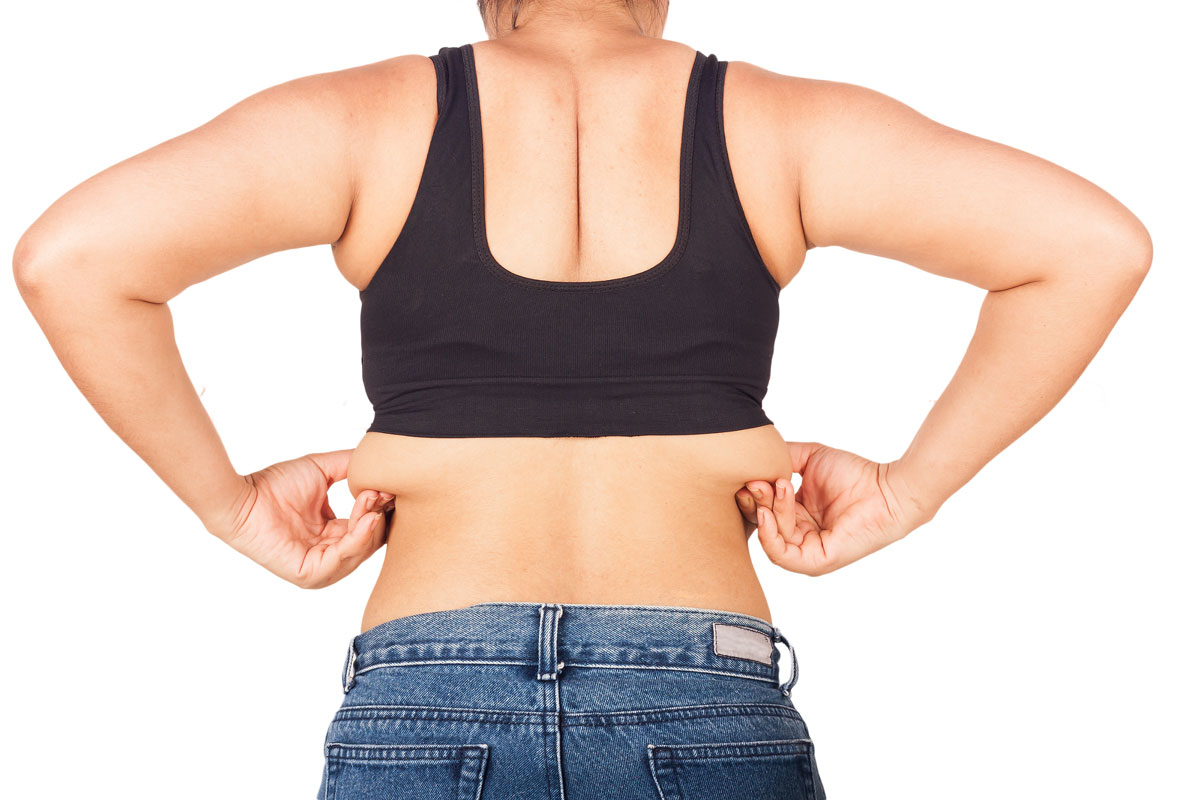
Debbie James, RDN, helps answer a reader’s question on how to lose back fat.

Do dietary supplements actually work or are they really just a waste of money? LAF registered dietitian Debbie James discusses the use of supplements.


What are the recommended daily allowances for the areas below? For reference, I’m an LA Fitness member, a female aged 50, 135 lbs., and 5’6”.
– Loretta H.

If I were to create a profile with your age, height, weight, and gender in a decent diet analysis program, it would compare your food record to the following US RDAs [or alternative value] for women age 31-50 years, given in amounts per day:
– Debbie J., MS, RD
This article should not replace any exercise program or restrictions, any dietary supplements or restrictions, or any other medical recommendations from your primary care physician. Before starting any exercise program or diet, make sure it is approved by your doctor.
Some questions have been edited for length and/or clarity.
 Have a nutrition question? Our registered dietitian is ready to help!
Have a nutrition question? Our registered dietitian is ready to help!
Email nutrition@lafitness.com or submit your question below and it may be featured in an upcoming article!
Good nutrition is all about variety! Browse through our list of unusual fruits and veggies and give yourself a chance to try something new.
Does liberally salting your food help you pump more iron in the gym? Registered Dietitian, Debbie James, investigates the claims!
One frequently asked question is about the recommended intake of protein. We hear you! Here is everything you need to know.


I try to gain muscle by eating a lot. Unfortunately, I have high blood pressure, high cholesterol, and diabetes. After joining LA Fitness, my weight has gone down and I’m still skinny. How can I grow some muscle so that I won’t scare people away due to looking like a skeleton? I appreciate you very much for your help!
– Kristine K.

Given your multiple conditions, you should consult with a Registered Dietitian Nutritionist for personalized advice according to your lab values and medications. If you choose to incorporate the following nutritional recommendations, do so only if you are under routine physician’s care for your blood pressure, cholesterol, and blood sugar. These suggestions focus on nutrient density for muscle growth.
Include 1-2 tablespoon of raw nuts daily. Full of heart-healthy fats and calories with a little fiber, these won’t raise blood sugar or blood pressure. One ounce of almonds provides 164 calories.
Use tortillas instead of bread. Increased density without the pockets of air from leavened bread means more energy per bite. By turning to burritos or wraps in place of toast and sandwiches, you could add 100 calories to each meal (10-12” flour tortilla = ~220-350 Cals vs. 2 slices regular bread = 150 Cals).
Focus on potassium and energy-rich produce. Bananas, sweet potatoes, peas, and avocados are notably high in potassium which is important for proper fluid balance and thus blood pressure. Winter squash and beans are also significant plant sources with notable calories.
Increase eating sessions instead of volume. More frequent servings allow your body to better process your food without overload. By giving yourself a bonus low-sodium snack before bedtime, you can add calories without spiking your blood pressure and blood sugar.
Maximize your workouts. You’re not going to grow muscle tissue by eating alone! Muscles need a greater stress than they currently experience in order to increase in size and strength. Meet with a Pro Results® personal trainer for the best instruction on specific exercises to grow muscle.
– Debbie J., MS, RD
This article should not replace any exercise program or restrictions, any dietary supplements or restrictions, or any other medical recommendations from your primary care physician. Before starting any exercise program or diet, make sure it is approved by your doctor.
Some questions have been edited for length and/or clarity.
 Have a nutrition question? Our registered dietitian is ready to help!
Have a nutrition question? Our registered dietitian is ready to help!
Email nutrition@lafitness.com or submit your question below and it may be featured in an upcoming article!
Good nutrition is all about variety! Browse through our list of unusual fruits and veggies and give yourself a chance to try something new.
Does liberally salting your food help you pump more iron in the gym? Registered Dietitian, Debbie James, investigates the claims!
One frequently asked question is about the recommended intake of protein. We hear you! Here is everything you need to know.
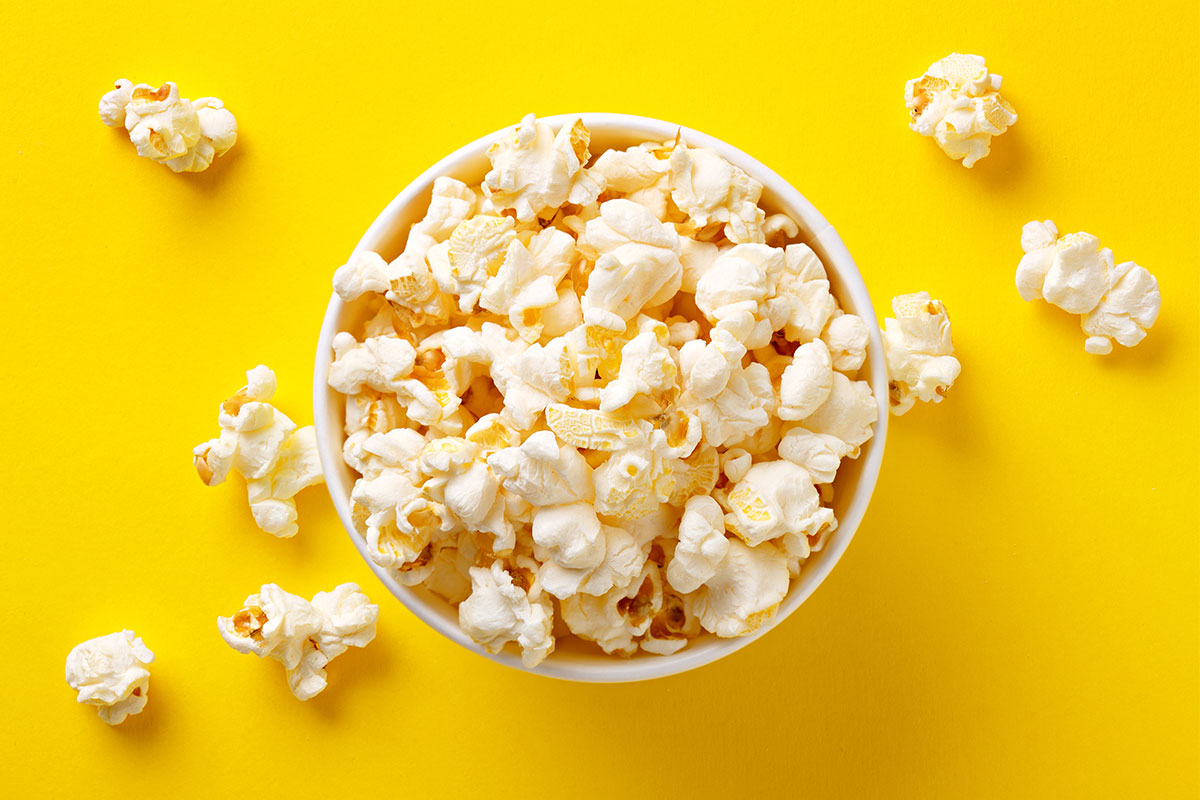

I have trouble staying full between meals and while in class and at work. I usually reach for a lot of protein. I know I am consuming more than I need, but how much is too much? And what are some food ideas that can help me stay satisfied without a ton of protein? I would especially like some recipes with a lot of fiber. I am a 19-year-old woman and working with a trainer to build muscle and lose weight.
– Patricia C.

The US RDA for protein is only 46 grams for a 19-year-old woman of reference bodyweight (approx. 126 lbs.), based on 0.8 gm protein per kg, though individual requirements can vary from 0.5 gm/kg/d to 1.0 gm/kg/d. In an energy-balanced diet for weight maintenance, the recommended limit for protein is 35% of calories to reduce the risk of chronic disease. To allow caloric room for phytonutrients from plants, one should consider limiting animal protein to 6-8 oz. daily plus 1 cup cow’s milk product, depending on energy needs. Of course, you could meet all your protein needs from plant sources, too.
For higher fiber filling snacks without ‘a ton’ of protein try these portable suggestions: air-popped popcorn and cashews; freeze-dried corn, peas & carrots; soynuts; sugar snap peas; individual hummus tub, celery & carrot sticks; veggie chips; apple and peanut butter;
Don’t forget to start your day with a decent breakfast to stave off hunger throughout the day! If you base your first repast on oatmeal with nuts + dried fruit or home-fried potatoes with onions + peppers, then add a protein like eggs on the side, you’ll have a complete robust and balanced meal.
Resource:
– Debbie J., MS, RD
This article should not replace any exercise program or restrictions, any dietary supplements or restrictions, or any other medical recommendations from your primary care physician. Before starting any exercise program or diet, make sure it is approved by your doctor.
Some questions have been edited for length and/or clarity.
 Have a nutrition question? Our registered dietitian is ready to help!
Have a nutrition question? Our registered dietitian is ready to help!
Email nutrition@lafitness.com or submit your question below and it may be featured in an upcoming article!
Good nutrition is all about variety! Browse through our list of unusual fruits and veggies and give yourself a chance to try something new.
Does liberally salting your food help you pump more iron in the gym? Registered Dietitian, Debbie James, investigates the claims!
One frequently asked question is about the recommended intake of protein. We hear you! Here is everything you need to know.
Be the first to know about exclusive
content, deals and promotions